#hemoglobin range
Text
sometimes i wonder why our normal body temperature is 35.5°C and then i go ah. anemia. right
#i did a blood test for uni recently and my hemoglobin WAS in the norm range but like. Barely#like 0.5 points away from being Out Of The Norm Range#mrk.txt#sponsored by measuring our body temperature because we feel kinda shitty and getting 35.5C on a thermometer
10 notes
·
View notes
Text
JUST GOT LAB RESULTS BACK AND MY BODY IS RECOVERING WELL BABYYY
#marzi speaks#hemoglobin was a 10.5!! that’s almost in healthy range!!#and that was BEFORE i started taking iron supplements. chances are i’m no longer anemic#my liver is no longer inflamed. i still shouldn’t get high though i’m on enough meds#only thing is my nutrition is still a bit insufficient. but i’m doing the best i can to remedy that#we’re fuckin doin it babyyyyyyy
2 notes
·
View notes
Text
i've been so deeply sick this past week that i've barely been conscious and have just been like "oh kay" and nodding along to things and just shuffling around
and i can tell i'm getting better even though i don't feel better because i'm able to complain in a funny way about it now
#anyway they said i'm probably going to need a blood transfusion#because my hemoglobin levels are like below the critical range#and im trying not to think about how they said 'hematologist' and then referred me to 'hematology oncology' because that's a scary word
4 notes
·
View notes
Text

Foods To Increase Hemoglobin
Increasing hemoglobin levels through diet and supplements is a practical approach to managing and preventing anemia. By incorporating iron-rich foods, enhancing iron absorption with vitamin C, and considering necessary supplements, you can effectively boost your hemoglobin levels. This process is essential for keeping tissues and organs oxygenated and functioning properly.
Read more to know sources of Foods To Increase Hemoglobin:
https://www.freedomfromdiabetes.org/blog/post/foods-to-increase-hemoglobin/3999
#hemoglobin#foods to increase hemoglobin#hb normal range#how to increase hemoglobin#hemoglobin normal range female#hemoglobin normal range male#iron rich fruits#Hemoglobin rich food list#How to increase hemoglobin#Avoiding Anemia#Anemia and Pregnancy#Blood increasing foods list
0 notes
Text
Best Foods for Increasing Hemoglobin Naturally?
This article is originally published on Freedom from Diabetes website, available here.
What is Hemoglobin (Hb)?
Hemoglobin is a protein in red blood cells that transports oxygen from the lungs to the rest of the body and returns carbon dioxide back to the lungs. Each hemoglobin molecule can carry four oxygen molecules because of the iron it contains. This process is essential for keeping tissues and organs oxygenated and functioning properly.
Your hemoglobin level have to be in normal range. It ensure that tissues and organs receive the oxygen they need to all functions properly.

Lets understand the hemoglobin normal range in men and women. Hemoglobin levels may varies depending on age, gender, and overall health.
Men: 13.8 to 17.2 grams per deciliter (g/dL)
Women: 12.1 to 15.1 grams per deciliter (g/dL)
Now lets understand how to increase the Hemoglobin?
Certain foods are rich in iron and other nutrients which are good for hemoglobin production.
You have include these foods in to your diet.
Legumes, Lentils, chickpeas, beans, and peas provide non-heme iron.
Leafy Greens: Spinach, kale, and collard greens are high in non-heme iron.
Nuts and Seeds: Pumpkin seeds, sunflower seeds, and cashews are good sources of non-heme iron.
Fortified Cereals and Grains: Many cereals and whole grains are fortified with iron.
Vitamin C-Rich Foods: Oranges, lemons, and grapefruits help enhance iron absorption. Also include Strawberries, raspberries, and blueberries are high in vitamin C.
Vitamin B12-Rich Foods include Milk, cheese, and yogurt.
Increasing Hemoglobin Through Supplements
Iron Supplements available in various forms, including ferrous fumarate, ferrous gluconate, and ferrous sulfate. Which is good for hemoglobin production.
Vitamin C Supplements can enhance the absorption of non-heme iron from plant-based sources.
Folate Supplements: Folate or folic acid supplements can be taken to address deficiencies that contribute to low hemoglobin levels.
Vitamin B12 Supplements, available as oral supplements, injections, or sublingual tablets for those with B12 deficiency.
Transform Your Health: Simple Steps to Boost Your Hemoglobin Naturally!
To know more tips to increase your Hemoglobin, please visit our Article.
Also please connect with me on my website, Facebook page, and YouTube if you want to stay in touch or give me any feedback!
#foods to increase hemoglobin#hb normal range#how to increase hemoglobin#hemoglobin normal range female#hemoglobin normal range male#iron rich fruits#Hemoglobin rich food list#How to increase hemoglobin#Improve hemoglobin with diet#Best supplements for hemoglobin#Effective ways to raise hemoglobin#Hemoglobin-boosting nutrients
0 notes
Text
y’all i think testosterone has cured my iron deficiency
#my hemoglobin is at the top of the range#my hematocrit is high#my rbc count is like at the top#never before seen#p sure my doctor is gonna tell me to stop taking the iron pills#also apparently a symptom of high hemoglobin is easy bruising#and let me fucking tell you#i bruised so fucking bad for this last lab#it’s fucking HUGE#and i didnt even feel her poke me so that’s wack
1 note
·
View note
Text
Exploring Blood Sugar Tests: What's The HbA1c Test And How Does It Compare To The Glucose Test?
Are you curious about your blood sugar levels? Do you wonder about the differences between the HbA1c test and the glucose test? we will delve into the world of blood sugar tests, focusing on the HbA1c test and comparing it to the glucose test. We'll explore what these tests mean, what their normal ranges are, and their importance in managing diabetes and overall health. So, let's embark on this journey to demystify blood sugar testing.
#blood sugar test#HbA1c test#HbA1c test normal range#diabetes#glucose#Hemoglobin#glucose test#glucose normal range#blood sugar normal range#full body checkup#online blood test
0 notes
Text
going to the doctor tmrw morning i looked at my blood test results and they seem all good from what i googled so idk
#tsh is smack in the middle of the range#and even my hemoglobin is higher than last time#so what ks up with me?
0 notes
Note
"@feed-the-roses some people struggle to absorb things that aren't pre-methylated (it's a gene defect) I was anemic for 30+ years before I switched to methylated folate and my body could suddenly process iron."
Why, why have none of my doctors told me this in the 7+ years I've been trying different iron supplements that all make my intestines feel like death? They all just say, "Oh, your hemoglobin is [currently] within normal ranges, so you're fine." Never mind my ferritin is at a 3 or 4 and I'm always tired. (Never mind that I have a family history of bleeding disorders.) *screeches*
So, can you get that over the counter, or...?
... not to project my trauma onto you, but how are your b12 and homocysteine levels?
Also, yeah, you can absolutely buy it otc. Look for L-methylfolate or a b complex with 'methyl support.'
If you're in the US and have any allergies, the brands I alternate between are Pure Encapsulations and Thorne. They're generally good about not adding extra junk in.
625 notes
·
View notes
Text
The interesting thing about medically transitioning is how you might just be treated with the wrong framework.
When I get my hormone levels checked, for instance, they check it against the wrong type of person, so everything is flagged. Did you know that testosterone encourages hemoglobin production? Well, my hemoglobin is perfectly in line with male levels, but my levels are checked for the wrong endocrine system. Before I realized this, I was really confused as to why my hemoglobin was two grams over the range given, and was confused as to why that happened, and worried about if I should be worried about that. But it was a normal consequence of my testosterone levels, which are also flagged though they are well-within the range that is typical for my age and health categories.
The way we treat and measure for trans people and trans patients will affect the treatment and education they receive. There are ways in which hormones especially can influence how one's body operates, and with that in mind, you also have to change the way you interact with a trans person. With my testosterone levels, if you were to measure them against the incorrect endocrine system, you would fail to treat me in reality - that being the way my body has changed and maintained homeostasis since being on T.
#trans#transgender#lgbt#lgbtq#ftm#mtf#nonbinary#trans medicine#i still need to get my levels checked but i've been busy#but since going on T they have been very satisfactory#like even going 'they should go on assigned sex' wouldn't work for somebody like me.#like. i am still on testosterone. and it's changed me and my body. therefore the way i am treated and measured ought to reflect that#hemoglobin is a fun word to say though. try it. say it. out loud. say it (are you afraid.)#i use myself again as an example because i think that experience perfectly encapsulates my frustrations
581 notes
·
View notes
Text
Round 1 - Phylum Arthropoda

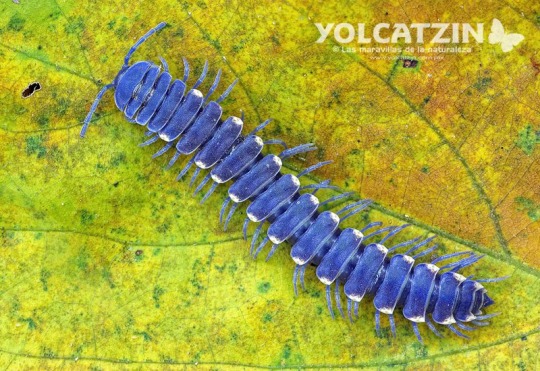


(Sources - 1, 2, 3, 4)
Arthropoda is a phylum of animals that have segmented bodies, possess a chitin exoskeleton, and have paired segmented appendages. They are colloquially called “bugs” though this is often only used for terrestrial arthropods, and sometimes only used for insects specifically.
After Nematoda, this is the most successful phylum, and it is far more diverse, with up to 10 million species! Arthropods account for 80% of all known living animal species. The three major subphyla include the Chelicerates (sea spiders, horseshoe crabs, arachnids, and the extinct eurypterids and chasmataspidids), the Myriapods (centipedes and millipedes), and the Crustaceans (shrimps, prawns, crabs, lobsters, crayfish, seed shrimp, branchiopods, fish lice, krill, remipedes, isopods, barnacles, copepods, opossum shrimps, amphipods, mantis shrimp, entognaths, and insects).
Arthropods are so diverse in fact that it is next to impossible for me to describe a model arthropod. They are important members of marine, freshwater, land, and air ecosystems and are one of only two major animal groups that have adapted to life in dry environments, the others being chordates. All arthropods have an exoskeleton and must molt as they grow, replacing their exoskeleton. Some arthropods go through a metamorphosis in this process. They have brains, a heart, and blood (called hemolymph, though some crustaceans and insects also use hemoglobin). They sense the world through small hairs called setae which are sensitive to vibration, air currents, and even chemicles in the air or water. Pressure sensors function similarly to eardrums. Antennae monitor humidity, moisture, temperature, sound, smell, and/or taste, depending on species. Most arthropods have sophisticated visual systems ranging from simple eyes (ocelli) which orient towards light, to compound eyes consisting of fifteen to several thousand independent ommatidia capable of forming images, detecting fast movement, or even seeing polarized or ultra-violet light. Some arthropods are hermaphroditic, some have more than two sexes, some reproduce by parthenogenesis, some by internal fertilization, some by external, some have complex courtship rituals, some lay eggs, some give live birth, some have prolonged maternal care. The first arthropods are known from the Ediacaran, before the Cambrian era.

Propaganda below the cut:
Insects are the first animals to have achieved flight
The smallest arthropods are the parasitic crustaceans of the class Tantulocarida, some of which are less than 100 micrometres long. The largest arthropod is the Japanese Spider Crab (Macrocheira kaempferi) with a legspan of up to 4 metres (13 ft) long. The heaviest is the American Lobster (Homarus americanus), which can get up to 20 kilograms (44 lb).
Many arthropods are popular pets, including various species of crab, shrimp, isopod, crayfish, mantis shrimp, millipede, centipede, tarantula, true spider, scorpion, amblypygid, vinegaroon, mantis, cockroach, beetle, moth, and ant! Some are even domesticated, including silk moths and honeybees.
Many arthropods are eaten by humans as a delicacy, and farming insects for food is considered more sustainable than farming large chordates. These farmed arthropods are referred to as “minilivestock.”
Arthropods feature in a variety of ways in biomimicry: humans imitating elements of nature. For example, the cooling system of termite mounds has been imitated in architecture, and the internal structure of the dactyl clubs of mantis shrimp have been imitated to create more damage tolerant materials.
Spider venoms are being studied as a less harmful alternative to chemical pesticides, as they are deadly to insects but the great majority are harmless to vertebrates. They have also been studied and could have uses in treating cardiac arrhythmia, muscular dystrophy, glioma, Alzheimer's disease, strokes, and erectile dysfunction.
Shellac is a resin secreted by the female Lac Bug (Kerria lacca) on trees in the forests of India and Thailand. It is used as a brush-on colorant, food glaze, natural primer, sanding sealant, tannin-blocker, odour-blocker, stain, and high-gloss varnish. It was once used in electrical applications as an insulator, and was used to make phonograph and gramophone records until it was replaced by vinyl.
One of the biggest ecosystem services arthropods provide for humans is pollination. Crops where pollinator insects are essential include brazil nuts, cocoa beans, and fruits including kiwi, melons, and pumpkins. Crops where pollinator insects provide 40-90% of pollination include avocados, nuts like cashews and almonds, and fruits like apples, apricots, blueberries, cherries, mangoes, peaches, plums, pears, and raspberries. In crops where pollinators are not essential they still increase production and yield. Important pollinators include bees, flies, wasps, butterflies, and moths.
Many arthropods are sacred to humans. In Ancient Egypt, scarab beetles were used in art, religious ceremonies, and funerary practices, and were represented by the god Khepri. Bees supposedly grew from the tears of the sun god Ra, spilled across the desert sand. The goddess of healing venomous bites and stings, Serket, was depicted as a scorpion. Kalahari Desert's San People tell of a legendary hero, Mantis, who asked a bee to guide him to find the purpose of life. When the bee became weary from their search, he left the mantis on a floating flower, and planted a seed within him before passing from his exhaustion. The first human was born from this seed. In Akan folklore, the cunning trickster figure Anansi/Ananse is depicted as a spider. Western astrology uses the crab constellation, called Cancer, and the scorpion constellation, called Scorpio. Dragonflies symbolize pure water in Navajo tradition. In Anishinaabe culture, dreamcatchers are meant to represent spiderwebs and are used as a protective charm for infants. They originate from the Spider Grandmother, who takes care of the children and the people of the land in many Native American cultures. The Moche people of ancient Peru often depicted spiders and crabs in their art. In an Ancient Greek hymn, Eos, the goddess of the dawn, requests of Zeus to let her lover Tithonus live forever as an immortal. Tithonus became immortal, but not ageless, and eventually became so small, old, and shriveled that he turned into the first cicada. Another hymn sings of the Thriae, a trinity of Aegean bee nymphs. Native Athenians wore golden grasshopper brooches to symbolize that they were of pure, Athenian lineage. In an Ancient Sumerian poem, a fly helps the goddess Inanna when her husband Dumuzid is being chased by galla demons. In Japanese culture, butterflies carry many meanings, from being the souls of humans to symbols of youth to guides into the afterlife. Ancient Romans also believed that butterflies were the souls of the dead. Some of the Nagas of Manipur claim ancestry from a butterfly. Many cultures use the butterfly as a symbol of rebirth. And the list goes on…
cute crab eat a strawbebby:

#round 1#animal polls#listen narrowing it down to just 4 images almost killed me#if arthropods don’t move on to round 2 I will have to take like an extra week off to mourn that I can’t show you all the cool bugs#there’s so many cool bugs guys#i chose the orchid mantis over a trilobite beetle and a poofy little bee fly cause I figured it had broader appeal#and used a horseshoe crab instead of a spider cause people are so Weird about spiders I worried it would impact the numbers#sigh#anyway I’m really hoping for Chordata Arthropoda Mollusca as top three#other phyla are all great but these three would make for the most interesting Round 2 imo
234 notes
·
View notes
Text
13/30 Science interlude!
(Previous) | (Index) | (Next)
⛬
We return to Prometheus, where I am taking a break to ramble about my job. A thing that I love. It will be a nice change. Also: weird blood!
I have been informed that some methods of accessing tumblr do not play well with long alt text rambles. To keep the flow between the main text and alt text separate, I’ll be copying the longest ones below the main text and citations. Captions that I think are going to be long enough to need this treatment will be marked with “Overflow Ramble [number]”, so they’ll be slightly easier to find. It’s not a perfect system, but Tumblr is not a perfect website.
And I am going to need the overflow space this time, because we’re getting into genetics!
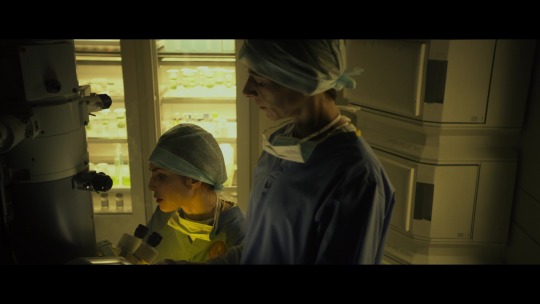
After electrocuting a decapitated alien head until it exploded into a shower of green gore, the creatures that claim to be scientists stuck a bit of the goop in some sort of very science-y DNA machine, leading to this:
“Let's have a look at its DNA. Isolate the strand. Okay. Compare it to the gene sample?”
“[Overlay… Processing… Processing… DNA MATCH.]”
“Oh, my God. It's us.”

I want this preserved for posterity, because this made me absolutely hoot. They avoided fake science technobabble by going so far in the other direction that it becomes equally meaningless.
What the scene is trying to say is “this alien shares the vast majority of its genetic material with humans, indicating that they are in fact related.”
I will get to how one would actually determine that, but first: The head turned into green goop. Green goop. Humans are notably not prone to turning into green goop. Otherwise Nickelodeon would’ve probably been shut down within a week.

(Image credit: Rich Fury/KCA2021/Getty Images for Nickelodeon)
This annoyed me so much that years later, I dug up a possible explanation that backfills this with cool biology.
Humans, and almost all vertebrates have hemoglobin-filled blood. And on a tangent that I must follow: The only vertebrate that doesn’t is the icefish Channichthyidae family, commonly known as the white-blooded fish.
You’ll never guess what’s special about them.
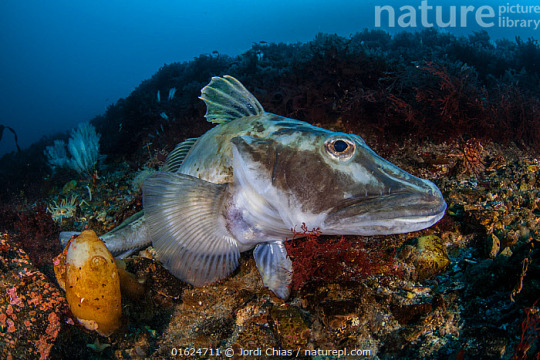
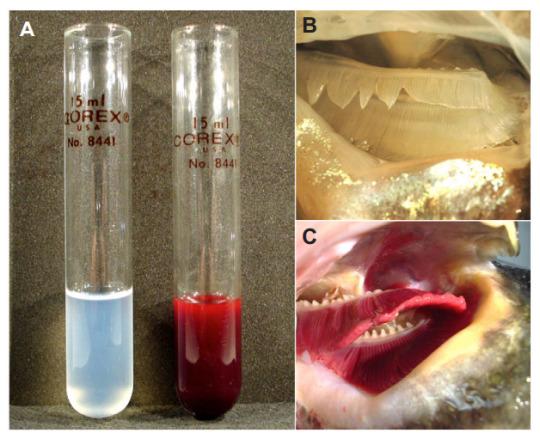
Yes, somehow these fish manage to live without hemoglobin, their blood only having 10% of the oxygen carrying capacity of their red-blooded cousins. Hell, most of them also lack myoglobin, which stores oxygen in muscle. The loss of myoglobin isn’t just a one-off event either, genetic studies have shown that these icefish have seen four distinct branches of their family tree lose myoglobin independently of each other. They have a wild series of adaptations to permit this, but basically they were already in such cold oxygen-rich water and moving so slow that they didn’t need all that extra oxygen-having stuff. They lost it, kept going, got bigger hearts, weirder muscles, and just. Kept. Going. They’ve actually expanded their range in the past 30 million years or so!
I love them! Evolution is wild. You know what’s also wild? There’s green-blooded vertebrates. Yes. You read that right. Yes, they still have hemoglobin. What they also have are staggering levels of biliverdin, which human bodies only produce when breaking down hemoglobin–when a bruise takes on a greenish hue, it’s because the dismantling of the blood under your skin has created biliverdin. While it’s generally been thought of as just a breakdown product, some research suggests that it also has protective effects against a number of diseases. In moderation, though. If you have enough of it to actually turn a bit green, you’ve got jaundice, which is not a thing you want to have.
But for a number of fish species, bush frogs, and skinks, they have way more biliverdin.
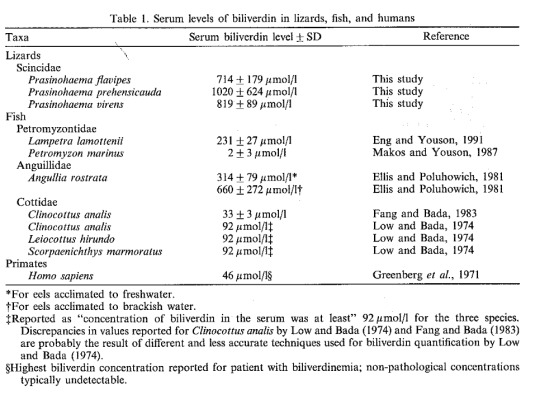
(Austin, C. C., & Jessing, K. W. (1994). Green-blood pigmentation in lizards. Comparative Biochemistry and Physiology Part A: Physiology, 109(3), 619-626.)
Humans usually don’t have much circulating biliverdin at all, so the table above compares someone with untreated jaundice to a number of other species–fish with two to fourteen times that amount, and the green-blooded skinks have twenty-two times as much! These creatures have green blood and turquoise-colored bones, and we still don’t know why. Maybe it’s protection against diseases, maybe it’s protection against parasites like malaria, maybe it’s to make them really blend in with foliage. Could be all of those at once, could be none of them, we don’t know! What we do know is that, as with the icefish, the green-blooded skinks in particular have independently evolved this feature four different times. (Rodriguez, Z. B., Perkins, S. L., & Austin, C. C. (2018). Multiple origins of green blood in New Guinea lizards. Science Advances, 4(5), eaao5017.)

(https://australian.museum/blog-archive/amri-news/amri-three-tiny-green-blooded-frogs-sing-like-birds/)

(https://web.archive.org/web/20180619143048/https://blog.nationalgeographic.org/2013/09/30/why-do-mysterious-lizards-have-green-blood/)
We have no mammals identified with biliverdin-filled green blood, you would need a lot of tweaks to how our bodies function to make this work. But it’s not literally impossible, like I thought in the theater! I’m quite sure the prop department didn’t do this level of research on the subject, but think about it!
I love biology! It’s! So! Weird!
And because I love biology, you’re not getting rid of me yet. My chosen field is genetics. This movie has presented me with a laughable sci-fi depiction of what we do.

So! What do we actually do, when we want to find out how related we are to another species?
I’m going to get into excruciating detail, so here’s the top-line summary: We extract the DNA, mash it up into readable little chunks, use some wicked cool machines to do the actual reading, and then we compare the target DNA with our DNA, and do some cooler stuff the movie isn’t aware of. A competent analysis would not only be able to tell you how much overlap two genomes have, but also be able to estimate how long the two species have been genetically distinct.
Is this way more than the movie needed for this plot point? Yes. But they didn’t actually have to do this at all, they could’ve just said the truth that science fiction usually ignores for budgetary reasons: “there’s no way these beings independently evolved to look so much like us, we have to be related.”
(Although even Star Trek, despite being the classic example of “putting a rubber thing on an actor’s forehead to make them an alien”, actually does acknowledge this. Precisely once. TNG s6e20, “The Chase”. It has never been mentioned again in the main line series, possibly because Rick Berman didn’t like it.)
Now. Time for me to take you all on a grand tour of DNA sequencing and phylogenetic analysis. You are all getting into the Willy Wonka boat with me. You have no choice.

So! You have a sample you’ve taken from a non-human mammal, one that’s never been genetically analyzed before. You are very lucky. You get to do fun stuff.

But before you get to sequencing, you have to purify any DNA in the sample. Your sample is full of all sorts of other biochemical gunk, and when cells are happy, DNA is packed away in the nucleus–you need to crack those open to get at the DNA.

Next, you need to break the DNA into chunks, that’s #1 on the diagram above. For most of the past twenty years, this has meant chunking DNA down into pieces 25-50 letters long–just enough to probably get something unique over most of the genome, though you will have some areas that look identical at that tiny scale. In recent times, we’ve been getting better and better at what’s called “long read sequencing”, which at this point means fragments of several thousand DNA letters in length–though that’s still pretty short, compared to human chromosomes though: the average length of a human chromosome is 134 million letters long.
Depending on the sequencing technology and its needs, the sample may also need “amplification”: getting copied over and over using a protein originally harvested from hotspring-loving bacteria (#2). I always love that bit just as a concept: it’s one of many places where the modern study of genetics uses the microscopic, biological machinery of proteins for our own use!
After everything’s prepared, Then the sequencing itself can occur. That too is wild–the most common versions these days use tiny little fluorescent proteins to tag each letter of the DNA and read the sequence of lights (#3!). Some use infinitesimally tiny electrical modulations as DNA passes by a microscopic reader. There’s loads of different ways, anything works, so long as it can be read by a computer.

All this takes place in machines that are either small enough to fit on a countertop, or big enough to look like a fridge, and come in Apple White or Cheap Plastic Appliance.
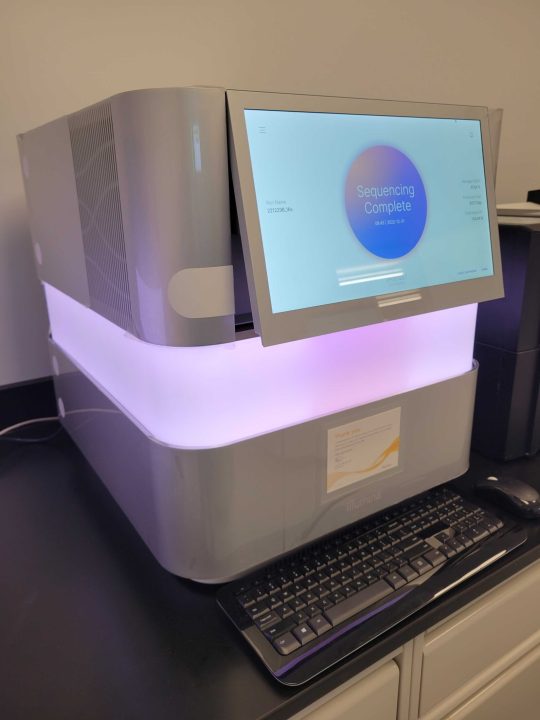

Because you have a new species, you’re building what we call a reference genome. This tries to capture as much of the entire genome sequence as possible. Here’s an interesting wrinkle, though–A lot of samples won’t be just DNA from your target species! You might be picking up microbial DNA along the way as well. That can be really interesting and worth knowing about, though! Some people spend their whole careers studying the genomes of microbes found on people’s skin, or in their bodies. You’ll be computationally sorting out which sequences are in contiguous, mammalian chromosomes, which are from mitochondrial DNA (those cute little powerhouses have their own genomes!), and which come from microbes.
At the end of it, you have sequenced an entire genome. Because you want to find out how related it is to humans, you compare it to our reference genome–The human reference genomes we use is an assembly made from multiple individuals.* We use the reference genome as a common point of comparison that we refer to when studying genetic variation.
*Though if you’re working with data form the Genome Reference Consortium as is usually standard, one anonymous African-European donor, RP11, is still the backbone of the reference, accounting for 70% of the latest assembly.

(https://mk.bcgsc.ca/telomere-to-telomere-human-genome-assembly/posters.mhtml)
So, we’d compare this new mammalian genome to our own–how much overlap would we find? A lot. How you define our similarities and differences from other species can change the answer, but you’ll expect a lot of overlap. Some areas of the genome diverge faster than others, others are highly conserved–generally the more stable it is, the more important it is for our function.
Through many, many, many studies and corroboration with the archaeological record, we’ve worked out how to estimate how long ago two species diverged from each other. Actually, you’d rarely be comparing between just two species at this stage–get out all the other relevant reference genomes you’ve got! Compare them all! Build a phylogenetic tree–the modern version of that “tree of life” idea that Darwin popularized. Then you’ll have a more accurate sense of how your mystery species relates to everything.
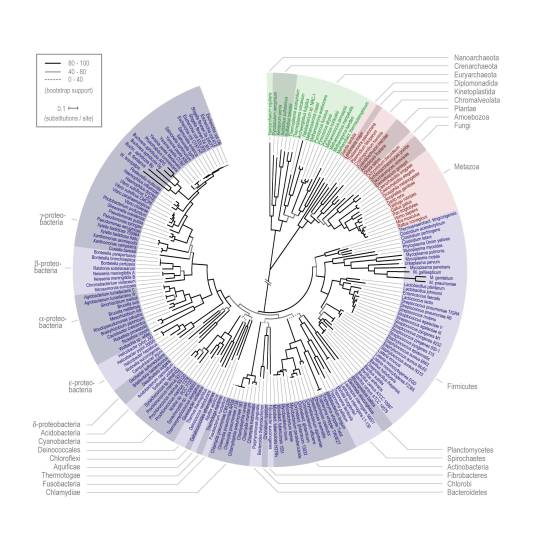
(https://www.embl.org/news/science/a-new-tree-of-life-allows-a-closer-look-at-the-origin-of-species/)
I’m going to go off on a tangent to end this post, because that’s just the start, taking the entire genome of a single individual. This is what most people think is what we always do. But no! That’s expensive overkill for most experiments. Once you’re familiar with a species, and you’ve sequenced DNA from many individuals, you can identify areas where lots of them have sequence variants. These can be completely benign, differences that make us all unique, or make an individual more susceptible to disease. This allows us to target what we want out of DNA sequencing: Are we trying to diagnose an illness? Identify a person from a tissue sample? Or are we doing something more exploratory?
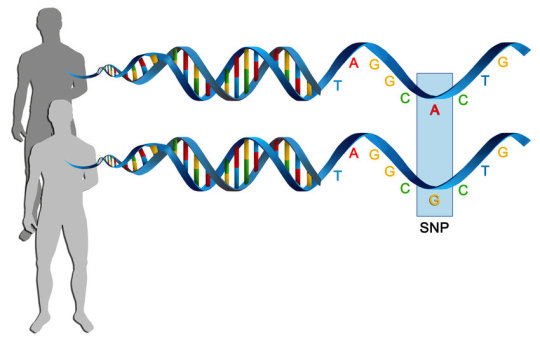
Depending on what you want, you select anywhere from a handful of locations, up to tens of thousands. The closest many people have gotten to this stuff is through ancestry services like 23andMe, which uses this kind of sequencing.
But that’s not all! There’s so many different targets to choose from, depending on what you want to do! So many techniques to get DNA in different ways! And we still haven’t gotten to the part that I actually work on.

I’m a computational geneticist. I get all the gigabytes of data that comes out of these experiments and I get to dig into the details, the patterns that emerge between genetic code and the details of the organisms we study, the connections between genome sequence and other, wilder things we can collect data on, the dizzying complexities of what goes on every microsecond of every day in every cell in your body.
I love my job.
⛬
(Previous) | (Index) | ⛬
⛬
Citations for alt-text rambles:
1. https://www.youtube.com/watch?v=O_YuTMDkWfI
2. https://doi.org/10.1242/jeb.116129 note: this source lists the image as credit to “J.M.B.”, which is not how I’m used to seeing images credited. Those are the initials of one of the authors, but I thought it meant “Journal of Molecular Biology”, so I went on a half hour wander around the internet trying to find where the hell this fish blood came from.
3. https://www.thebhs.org/publications/the-herpetological-journal/volume-13-number-4-october-2003/1729-01-hyperbiliverdinemia-in-the-shingleback-lizard-tiliqua-rugosa
4. https://doi.org/10.1111/j.1439-0264.2009.00952.x
5. https://en.wikipedia.org/wiki/Mandrill#Characteristics
6. https://www.vogue.com/article/dune-part-two-costumes-jacqueline-west-interview
7. http://dx.doi.org/10.13140/RG.2.2.29564.08327
8. https://www.researchgate.net/publication/357946568_New_approaches_and_concepts_to_study_complex_microbial_communities
9. https://karobben.github.io/2023/10/30/Bioinfor/PacBio/
Overflow Ramble 1
the fuckin “DNA MATCH” machine. I already wrote a 380-word alt-text about this thing last time. I’m not doing it again. I’m going to talk about things I like instead. Such as Dune: Part Two! Yes! I mentioned it last week and then didn’t ramble about it after seeing it. Well, NOW I WILL. tl;dr it’s good, go see it. I only vaguely remember the book, but I liked the changes they made to center the fact that no, Paul becoming Lisan al-Gaib is not actually a good thing.
Man, it’s nice to see a movie where the costumers and set designers got good time to work on their craft. (cite 6) Even the generic Harkonnen soldiers looked great–reminded me a lot of my beloved Warframe, probably because the costume designer was using H.R. Giger for inspiration there. Everything felt real. Even the stuff that definitely wasn’t–the gigantic spice harvesters and ships felt like living, physically present beings. The sand worms looked great. The movie did a fantastic job visually communicating the massive size of so many things. Especially because the camera remains restrained: no weightless zipping around, the camera itself follows paths and finds locations that make sense.
Chakobsa continues to be a fantastic conlang, now the work of both David and Jesse Peterson. It’s heard a lot more in this movie, and there are some great flourishes with it. While there isn’t as much Arabic vocabulary in it as in the original books, I remember from DJP’s work streams that he definitely was using the grammar of Arabic as one of his touchstones. Most key words remain Arabic though–jihad was removed, but it made me double-take in the theater when Stilgar referred to Paul as the Mahdi.
I’m of two minds about lowering the Arab influences on the Fremen–on the one hand, missing representation, which included some explicit ties to real world anti-imperial struggles in North Africa and the Middle East. On the other, these first two movies are about how the Fremen are manipulated by a colonial power, using their adherence to a faith that was manipulated by a different colonial power. They become both hapless victims and also perpetrators of colonial violence, with only Chani seeing through it.
I think the general decisionmaking process on cultural changes was motivated by a desire to remove some of Frank Herbert’s bad ideas–particularly around the Harkonnens, thank fuck. That seems to have been the thinking around altering the Fremen a bit as well. Did it succeed? Not my place to say. On all other notes, I have no reservations recommending the movie. It’s a very earnest attempt to bring that world to life, and I think it succeeds.
Overflow Ramble 2
A figure showing the basic steps of the standard Illumina sequencing method (cite 7). It is broken into four sub-figures:
Library Preparation. The genome is snipped into small fragments, then adapters are attached (“ligated”) to stabilize the molecule and make it behave. This creates a “library” of DNA that will be read from.
DNA library bridge amplification. The adapters on DNA fragments stick to a prepared plate, which is covered in little clusters of molecules that specially attach to those adapters. Biochemical processes are then carried out in repeated cycles to duplicate (or “amplify”) those fragments in such a way that the clusters on the plate are all filled with copies of just one DNA fragment.
DNA library sequencing. The DNA is modified so that the four letters it’s made out of all glow a specific color, with each DNA letter shining in sequence. This is pure awesome and I love it.
Alignment and data analysis. Because of some details on how step 1 is done, you have lots of fragments that create an overlapping patchwork of sequences. This allows (most of) the genome to be pasted back together by looking for overlaps (“contiguous sequences”, or “contigs” for short).
Congratulations! You have just attended an abridged graduate-level introductory lecture on Illumina sequencing.
Overflow Ramble 3
A diagram of PacBio Systems’ sequencing technology, Single Molecule, Real-Time Sequencing, or SMRT Sequencing, because scientists love acronyms. Pretty much every step is different from how Illumina does it. I cannot find a diagram that’s both brief and also good at explaining what it’s showing, so this is the best I could find. It’s split into four parts with attendant text, which I’ll try and explain as well.
“SMRTbell template. Two hairpin adapters allow continuous circular sequencing.”
Library preparation basically involves taking a longer chunk of DNA and splitting it in half lengthwise, in such a way that the two strands of DNA will form a single-stranded loop. This is called a SMRTbell library. Why? I have no idea!
“ZMW wells. Sites where sequencing takes place.”
Then, these are fed into SMRT Cells, which contain zero-mode waveguides (ZMWs). I was once told what this means, and I have completely forgotten, but it sounds like something from Gundam.
“Modified polymerase. As a nucleotide is incorporated by the polymerase, a camera records the emitted light.”
What I do understand is that at the bottom of each of these little holes, they stick a molecule which the DNA sticks to. This molecule, a polymerase, has precisely one job: make more DNA, an exact copy of what it’s latched onto. So you give it this loop of DNA, feed it a soup of free DNA letters, and it starts cranking out a new strand.
“PacBio output. A camera records the changing colours from all ZMWs; each colour change corresponds to one base.”
Each one of the DNA letters given to the polymerase has a special modifier, on it which flashes a color when the polymerase slots it into the new strand it’s making. A camera picks up this flash. And, because the DNA is a circle, the polymerase doesn’t know where to stop–it just keeps going and going until something breaks or it runs out of letters to work with. This means that even if the camera misses a flash the first time, it will have more chances to see it, and confirm what it already saw.
Wait what in the fuck this figure was from somebody’s thesis (cite 8), but that wasn’t what actually got this into search results. What got it there was a github page with a vtuber avatar sitting in the corner?? What??? (cite 9)
⛬
(Previous) | (Index) | (Next)
⛬
#Prometheus 2012#Prometheus (2012)#I go rogue and refuse to talk about the movie#or rather I spend 4600 words talking about a quarter of a scene as a springboard to talk about my job and how cool it is#I kind of envy people who work on wild population genetics#but also their sample sizes are tiny and bad for my particular specialty#so I'm giving a broad overview on how reference genome assembly works and I've only ever done phylogenetics on intraspecific variants#yes this is how much I talk about bits of my job that aren't even directly my job#because working in genetics is SO COOL#tomorrow we'll be back to analyzing inexplicable characters and androids poisoning people don't worry
42 notes
·
View notes
Text
everyone needs to be kind to every nurse forever actually
#marzi speaks#these people have been treating me with so much kindness. they encourage me and they make it their goal to help me be comfortable#i’ve never been this sick in my life before#when i was admitted my hemoglobin levels were at a 4.8. that is Nothing#this morning they were up to a 9.something. which is far far more stable#but the goal is for me to get producing my own hemoglobin again and get back up to the 12 ranges#these women have been bringing me food. literally cleaning up my shit (though i graduated to being able to use the normal bathroom today!!!)#bringing me anti-nausea meds for when the antibiotics get overwhelming and blankets for when i get cold#it’s so nice. they’re so so kind#if you know a nurse thank them for what they do. i mean it#being in the hospital is horrible but kind compassionate nurses make it feel less horrid#makes me feel like i’ll be okay
3 notes
·
View notes
Text
I was thinking. What if dying is what saved Danny’s life at some other point
Context: (this is all based off my understanding of how my hematologist explained it and I didn’t bother googling stuff with my headache so feel free to correct any med stuff here)
My platelet levels are slightly above the normal range. Now, I’ve had dengue twice, and having too many platelets at a normal time means that I didn’t have to bleed from my gums or something when my platelet levels dropped due to dengue. The catch is that my platelets are high because my red something is a bit low (hemoglobin or rbc, i cannot remember sorry) which means i need iron supplements.
Now back to dpxdc
What if dying means that some hormone or health indicator or something was just permanently above or below average for Danny. It doesn’t affect anything, it’s just there- a fact of half-life.
Now Oracle is alarmed when during some routine city CCTV checks she sees some sketchy movement in the Botanical Gardens. A quick check from one of the bats reveals a skinny teenager with a basket of leaves and flowers.
An hour later, Selina is calling Bruce to say Ivy is annoyed his brood made “her kiddo” skip his “greens”
Dying means danny gets to enjoy veggies+ and tea+. They don’t make him hyper like realms-grown plant. Instead he gets vitamins or something from them like a human and non-Ivy-touched plants.
(I realize this kinda side tracked and is no longer saving danny’s half life but i would love to see if anyone writes a prompt or ficlet or something about more on the irony of “dying saved my life” instead of whatever my prompt evolved into)
#tinybriewrites#dpxdc#dp x dc#prompt#ivy: i just want to feed him goddamnit#this is why we cant have nice things bats you ruin them
126 notes
·
View notes
Text
Fish of the Day
Today's fish of the day is the giant tube worm!

The giant tube worm, known by scientific name Riftia pachyptila is a common marine invertebrate. Unlike the common ship parasite of the same name, this animal is found in the deep sea, only discovered in 1977 when exploring the hydrothermal vents off the Galapagos islands in the rift nearby. The range of the tube worm is concentrated at rifts and trenches formed by tectonic plates around the world, and although they are theorized to possibly be in other areas of the world, they have only been recorded in the Pacific and Indo-Pacific oceans. Living anywhere from 2,564 - 2,673 Meters of depth (8,412- 8,770 feet) these animals have a life that is irreparable tied to the hydrothermal vents they concentrate around.

Due to their scarcity, hydrothermal vents are often misunderstood. These are fissure vents along the sea bed near volcanic activity that emits extremely heated water and chemicals. This supports environments of bacteria and archaea in the deep sea that previously could not have managed in the cold waters, with the trade off that the waters near them are anywhere from 60-440 degrees celcius (140-870 degrees fahrenheit). This works particularly well for the tube worms, as they prefer to live in warmer temperatures. In fact, when there were live specimens caught in 1998, the captive worms were found to enjoy living in environments around 80 degrees Fahrenheit. These hydrothermal vents also foster the bacteria that keep adult worms alive, the Campylobacterota phylum.

The giant tube worm has a life cycle similar to many others within its family, worms start life as free swimming planktonic organisms, which swim weakly and move via rows of cilia along the outer layer of their skin. Once they find a hydrothermal vent, this is when they enter a sessile stage as a juvenile, where they will begin acquiring the bacteria around the vent within themselves. These worms have no mouth, and the bacteria is an essential part of the organism, acting as their only source of sustenance in a kind of symbiosis referred to as chemoautotrophic symbiosis. Once they are stably rooted into a colony around a vent, these worms will grow quicker than any other deep sea animal, breaking the ideas in 1977 about how slow life in the deep sea was. They can grow around 1.5 meters within less than 2 years, reaching a total or 2 meters or 6.6ft total, giving them the fastest growing rate of any marine invertebrate known.

The campylobacterota takes root in the tube worms similar to an infection, through the skin. This bacteria will then bloom inside of its host, starting at what was once the mouth and esophagus in juvenile and larvae worms, before taking place in the midgut. This bacteria will then carve out an area within the worm called the Trophosome cavity, and the remainder of the digestive tract fills in. This bacteria subsists off of carbon dioxide and hydrogen sulfide, from which it can create all organic compounds needed to sustain life, releasing sulfur as a waste product. It gains energy by oxidizing the inorganic sulfur in a cycle similar to the calvin cycle used for photosynthesis.

After the worm has settled into its home along the vent and has entered the symbiotic cycle with bacteria, the worm will begin growing what is referred to as a husk or a shalth around it. This is a hard chitin shell that is used to prevent predation on the internals of the worm, along with protection for the trophosome cavity within. Then, above that is the vestimentum, which are muscle bands that can be used to pull in a gill structure above in the presence of predators, this is also where the genitals can be found, and the heart. The most striking and visible section of the worm is the branchial plume. This plume is a bright red color due to the extensive hemoglobin chains within it, despite the presence of sulfides, which usually inhibit hemoglobins. These plume gill structures are used for extending into colder water where more oxygen is available, along with bringing in carbon dioxide and hydrogen sulfides for the bacteria.

Reproduction of this animal is not reliant on a season or specific age, but rather to the volcanic tectonic plate activity around it. During a spawning event, males within the colony will release spermatozoa into the water, which will locate female tube worms, swimming within the husk structure and into the ovaries. In laboratory specimens, this process takes only 30 seconds, but in the wild it is thought to take much longer and survival of the spermatozoa to rely upon the hydrothermal vent. Once fertilized, eggs will grow within the worm for several months, and when the hydrothermal vent conditions are right, the eggs will be released into the water column, relying on deep sea currents and buoyancy to carry them to the pelagic layer. The life cycle begins all over again.

Have a wonderful day everybody!
#tube worm#deep sea#hydrothermal vent#giant tube worm#deep#vents#volcanic#Riftia pachyptila#fish#fish of the day#fishblr#fishposting#aquatic biology#marine biology#freshwater#freshwater fish#animal facts#animal#animals#fishes#informative#education#aquatic#aquatic life#nature#river#ocean
24 notes
·
View notes
Text
Accessed my lab tests and-

"Based on documented sex at birth" compared to male red blood count levels. Testosterone impacts this shit. I've been on T for 5 fucking years. My hemocrit, red blood cell count, and hemoglobin all fell below standard male range while I was in the hospital and they wanted to go by fucking birth sex rather than my current fucking body.
And can I even tell if something has going wrong? Can they? Probably not! Because the nurses refused to ask the doctor about my HRT when I needed it, we can hope that it's due to my T levels falling and not something else.
I was woken up at 4am every day for what? Labs ruined by transphobia? Fuck.
#notaterftip#not sarcasm#I should talk to my endo about this#legit watching multiple organs show issues and the blood labs are a question mark
22 notes
·
View notes